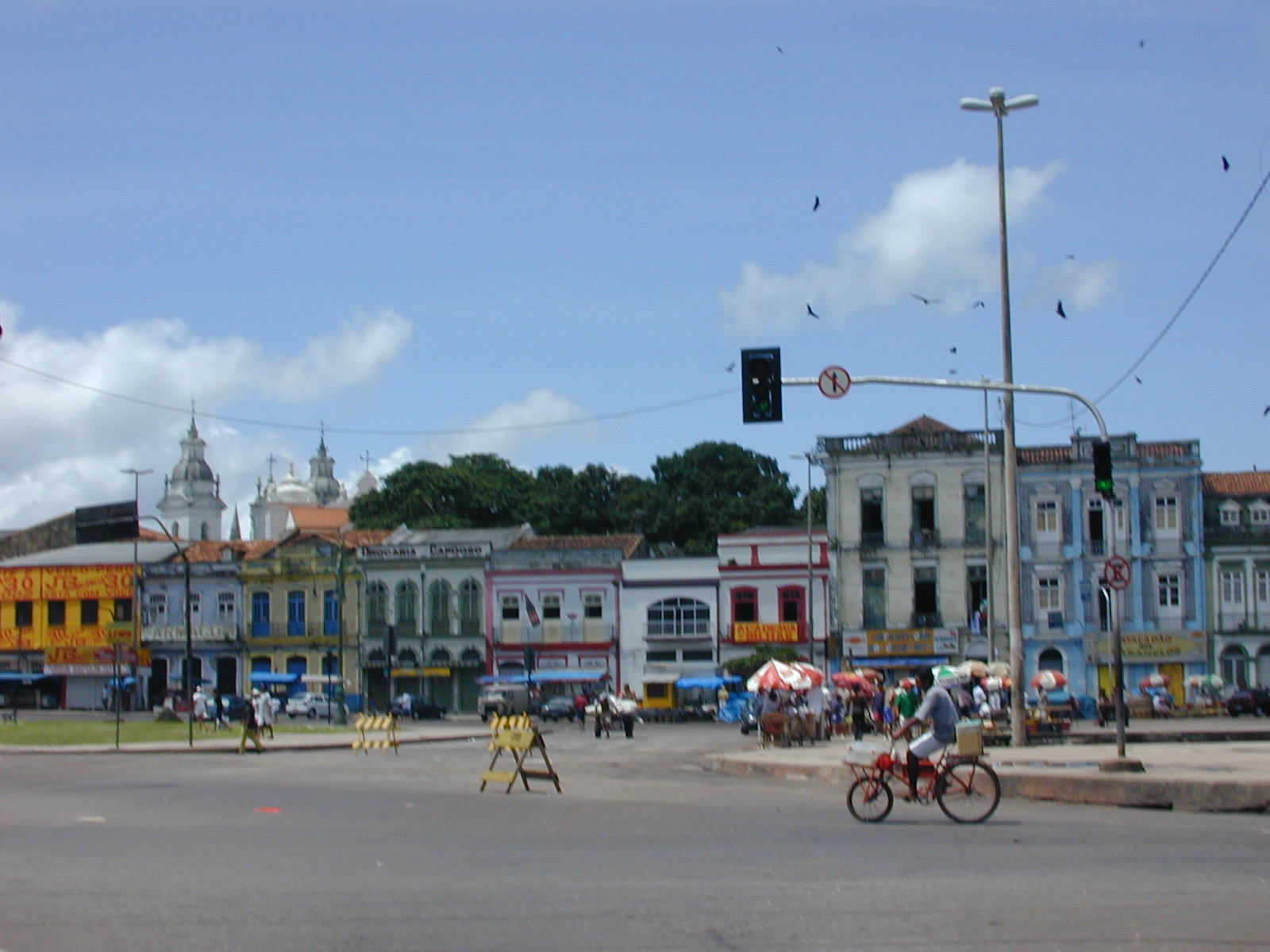Brazil's Northern Region
Belem Travel Guide
Fishing villages lie along the northern coast, at the mouth of the Amazon River.

Belém is the capital of Pará, located at the mouth of the Amazon River, and is an important cultural and commercial center in northern Brazil. Known for its colonial architecture, including the Forte do Presépio and Mercado Ver-o-Peso, Belém offers a glimpse into Amazonian life. The city's culinary scene is renowned for dishes that feature ingredients from the Amazon, such as açaí and tucupi.
Top 5 Things to See & Do in Belém
Visit Mercado Ver-o-Peso
Stroll through Mangal das Garças Park
Learn about the Amazon region at Estação das Docas
Explore the Forte do Presépio
See a show at Theatro da Paz (program)
Closest airport
Aeroporto Internacional Val-de-Cans (BEL)
Main bus terminal
Terminal Rodoviário de Belém
Terminal Hidroviária
Main ports
How to get to Belem
How to get to Belem by Bus or Plane
Belem, the capital of Pará state in northern Brazil, is accessible by various modes of transportation. The most convenient way to reach Belém is by air, with the airport offering international flights from For Lauderdale and Lisbon, and domestic flights from most major cities including Sao Paulo, Brasilia, Fortaleza, and Santarem.
Additionally, Belém can be reached via long-distance bus services from other Brazilian cities in the north-east, although these journeys are very time consuming due to the long distances. To reach Belem by bus from Sao Luis takes 16 hours, and from Santarem takes 25 hours.
How to get to Belem from Manaus (via Santarem)
For a more unique approach, take a boat along the Amazon River, with regular services connecting Belém to Manaus, Santarem, and other Amazonian destinations. The trip from Manaus to Belem takes around 4-5 days downstream: 2 days/1 night from Manaus to Santarem, and a further 2.5 days/2 nights from Santarem to Belem. Note, the reverse trip from Belem to Manaus, upstream, is slower and takes around 6 days. Times also depend on the boat and the river conditions.
This trip offers a unique opportunity to experience the landscapes of the Amazon rainforest. Amenities are very basic and include hammock-style sleeping arrangements on board.
How to get around Belem
Getting around Belem is relatively straightforward, with several transportation options available. The city's public transportation system includes cheap buses that cover extensive routes throughout the metropolitan area. Up to date routes and timetables are can be found on Google Maps by searching for directions.
Ride-sharing services like Uber are also widely available and inexpensive, are a safer way to travel after dark.
It is possible to walk in the historic district where many attractions are clustered. Renting a bicycle is an increasingly popular choice, with dedicated bike lanes available in some parts of the city.
Things to know before you go to Belem
Belem is known for its rich history and unique Amazonian cuisine. Visitors should be aware that the climate is hot and humid year-round, with a pronounced rainy season from December to May, so packing light, breathable clothing and rain gear is advisable. The city's historic center, including landmarks like the Ver-o-Peso Market, Forte do Presépio, and the Theatro da Paz, offers a glimpse into its colonial past. It's also important to exercise standard safety precautions, as with any major city, including being mindful of belongings and avoiding less populated areas at night.
How to visit Ilha de Marajo from Belem
Ilha de Marajo, located at the mouth of the Amazon River across from the river from Belem, is the world's largest river island. known for its rich biodiversity, unique culture, and traditional lifestyles. The island is famous for its large population of water buffalo, which roam freely and play a significant role in the local economy, used for milk, meat, and even transportation.
A distinctive dish on the island is tacacá com tucupi, a soup made from manioc root and indigenous spices, often featuring the turu worm, a traditional delicacy. Marajo is also deeply influenced by indigenous cultures, especially the Marajoara people, who left a legacy of intricate pottery, unique artistic traditions, and sustainable agricultural practices that still shape the island's culture today.
It is accessible by boat from Belem's main port Terminal Hidroviário De Belém, taking around 2.5 hours, or longer depending on the river conditions.












